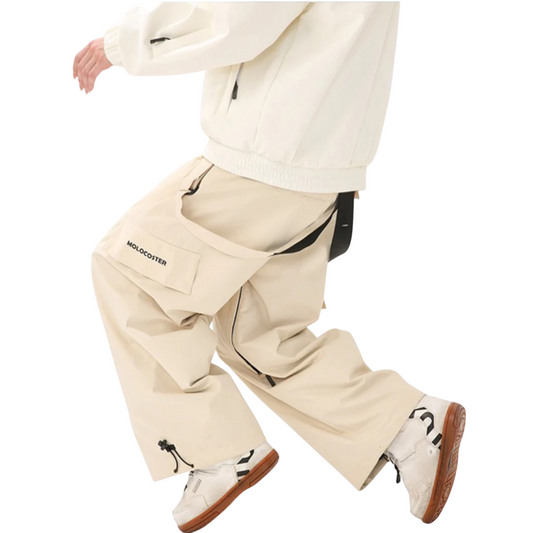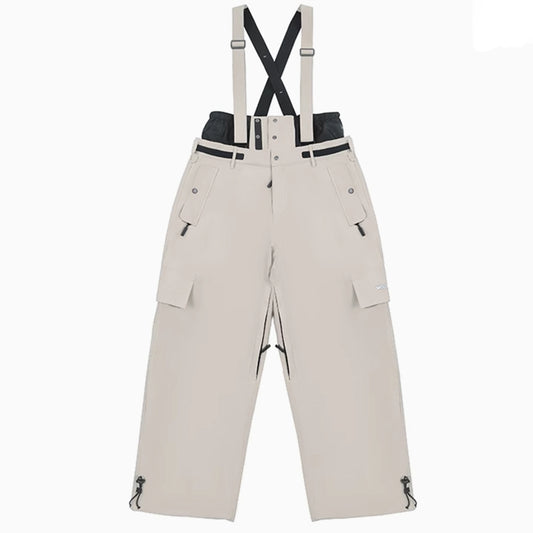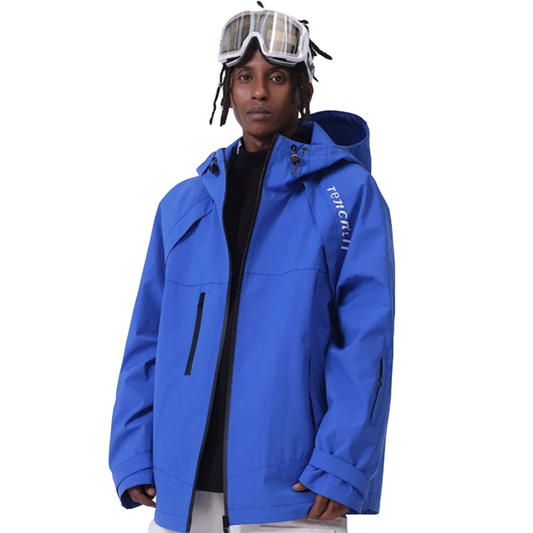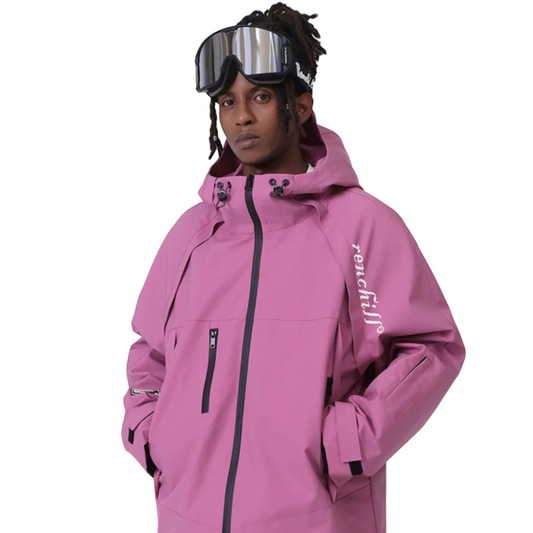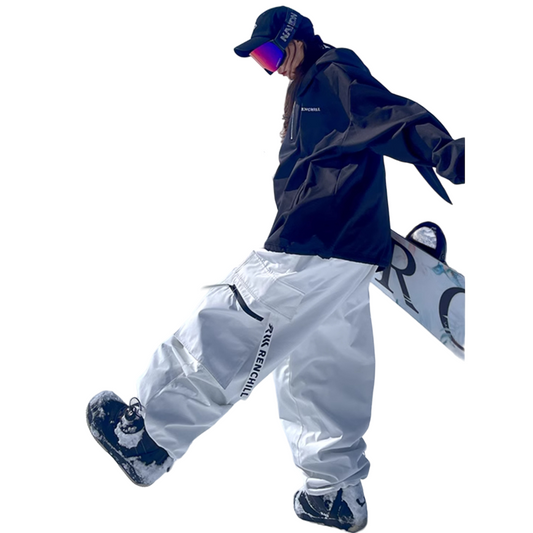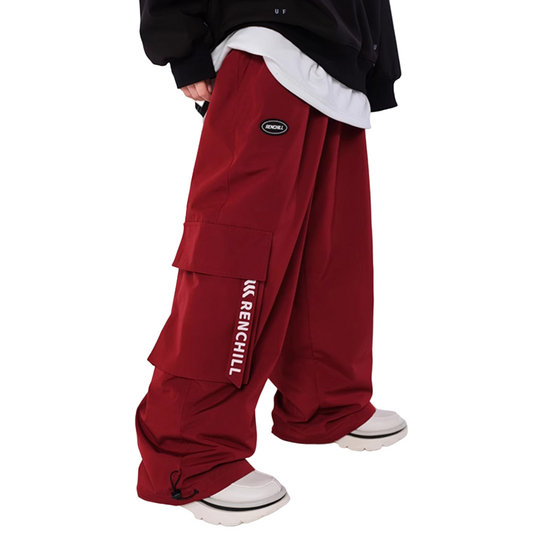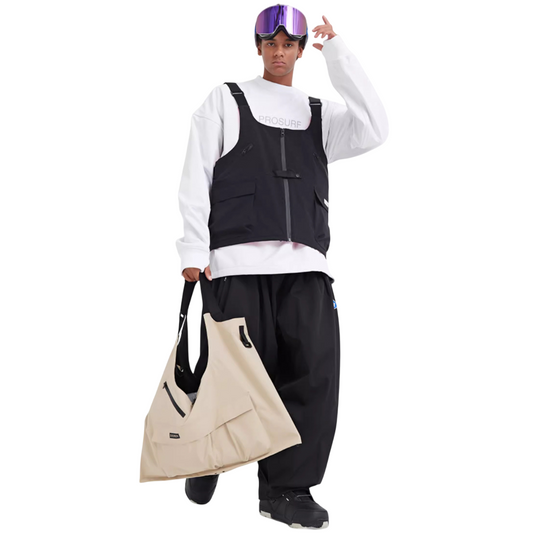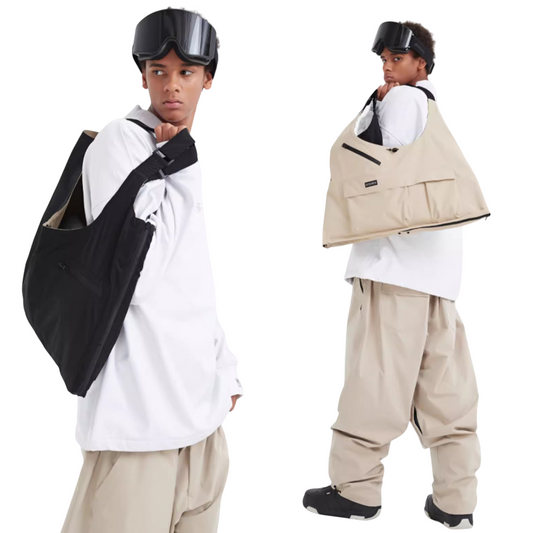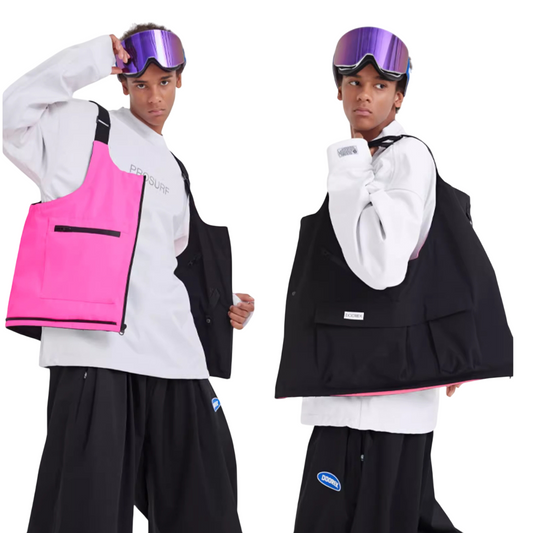Ready to start your ski adventure? Check out these top 3 downhill snow skis for beginners:
- K2 Mindbender
- Rossignol Experience
- Salomon QST
You get easy control, soft flex, and stability with these skis. Camber and rocker features help you manage turns. Flexible hybrid skis respond quickly, making skiing smoother for new skiers. Consider your skill level, favorite ski terrain, and budget before you choose. Pair your skis with SNOWMOCACA Ski Pants for a stylish ski trip outfit—baggy ski trousers add comfort and warmth. Enjoy free shipping on orders over $99 and upgrade your snow set! ⛷️
Key Takeaways
- Choose beginner-friendly skis like K2 Mindbender, Rossignol Experience, or Salomon QST for easy control and stability.
- Look for skis with a softer flex and rocker profile to make learning turns easier and more enjoyable.
- Select ski length based on your height; shorter skis help with control while longer skis provide stability.
- Pair your skis with SNOWMOCACA Ski Pants for comfort and warmth; they offer waterproofing and insulation for a better experience.
- Always check the weather and pack essential gear like helmets, goggles, and waterproof clothing for your ski trip.
Why Choose Downhill Snow Skis
Beginner-Friendly Features
When you start skiing, you want skis that help you learn quickly and safely. Downhill skis give you that support. Most beginner skis use a softer flex, which lets you start turns with less effort. You will notice that these skis often have a rocker profile, making it easier to begin each turn. Many beginner skis also come with integrated bindings, so you do not have to worry about matching parts.
You will find that beginner skis often use foam or wood in their construction. These materials keep the skis light and stable. Narrower skis work best on groomed runs, which are perfect for learning. Lower turn radius helps you make tighter turns, so you feel more in control. Many beginner skis also cost less, so you can get good value as you start your ski journey.
Tip: Choose skis with a softer flex and a rocker profile if you want to make learning easier and more fun.
Downhill Skis vs. Other Ski Types
You might wonder how downhill skis differ from other types of skis. Downhill snow skis, also called alpine skis, use fixed-heel bindings. This design keeps your boot firmly attached to the ski. You get better control, especially when you turn or stop. Fixed-heel bindings also improve weight distribution and edge control, which helps you feel stable on the slopes.
Other types of downhill skis, like cross-country or touring skis, use free-heel bindings. These let your heel lift off the ski, which works well for walking or climbing but not for fast downhill runs. Downhill skis give you more stability and control, which is why most beginners choose them.
You can use downhill skis on many types of terrain, but they work best on groomed slopes. If you want to try powder or off-piste skiing later, you can look at other types of downhill skis designed for those conditions.
SNOWMOCACA Ski Pants and Ski Trip Outfits
Features of SNOWMOCACA Ski Pants
You want ski pants that keep you warm, dry, and comfortable. SNOWMOCACA Ski Pants offer features that help you enjoy your first ski trip. These pants use insulated material, so you stay warm even with just a light thermal base layer. Waterproofing protects you from wet snow and sudden weather changes. Snow gaiters keep snow out of your boots, so your legs stay dry. Ventilation zips let you control your temperature while skiing. Adjustable waistbands give you a secure fit, no matter your body type. Cuff reinforcement adds durability, which helps if you fall or slide. Multiple pockets make it easy to carry your phone, snacks, or lift pass.
|
Feature |
Benefit for Beginners |
|---|---|
|
Insulated |
Provides warmth with just a light base-layer thermal. |
|
Waterproofing |
Protects from unexpected weather conditions. |
|
Snow gaiters |
Keeps snow out, enhancing comfort and dryness. |
|
Ventilation zips |
Allows for temperature control during skiing. |
|
Adjustable waistbands |
Ensures a secure fit, accommodating different body types. |
|
Cuff reinforcement |
Increases durability, especially for beginners who may fall. |
|
Multiple pockets |
Offers convenience for carrying essentials while skiing. |
You get a waterproof rating of 15,000 mm to 20,000 mm, which is higher than many beginner ski brands. This means you stay protected in heavy snow and wet conditions. Breathability ratings range from 10,000 g to 15,000 g, so you feel comfortable during moderate activity.
Tip: SNOWMOCACA Ski Pants come in plus sizes, so everyone can find a good fit for their snow set.
Baggy Ski Trousers and Snowboard Bib Pants
Baggy ski trousers give you extra comfort and freedom to move. The relaxed fit lets you bend, twist, and turn without feeling restricted. You can add thermal layers underneath without feeling bulky. Loose pants also help with ventilation, so you stay cool when skiing hard.
|
Benefit |
Explanation |
|---|---|
|
Enhanced Comfort |
The relaxed fit provides more space, allowing for a full range of motion, essential for skiing. |
|
Better Layering Options |
Extra room allows for comfortable layering of thermal layers without bulkiness. |
|
Improved Ventilation |
Loose fit promotes better airflow, helping regulate body temperature during intense skiing. |
Snowboard bib pants offer extra coverage and keep snow out of your waist area. You get more protection and warmth, which is great for beginners.
Ski Suit Set and Two Piece Snowsuit
A ski suit set helps you stay safe and comfortable. You need a base layer, ski jacket, gloves, helmet, and goggles. Full ski suits give you complete protection and make it easy to move. You do not need to mix and match different pieces. Two piece snowsuits let you adjust your outfit for changing weather. Beginners benefit from full suits because they offer better coverage and warmth.
- Base layer or long underwear
- Ski or snowboard jacket
- Gloves or mittens
- Helmet and goggles
You should check the weather before your trip and bring all the gear you need. Overpreparing keeps you safe and comfortable on the slopes. SNOWMOCACA offers free shipping on orders over $99, so you can get your ski trip outfit delivered without extra cost. 🏂
Top 3 Downhill Snow Skis for Beginners
Choosing the right skis can make your first days on the slopes much more enjoyable. Here are the top three downhill snow skis for beginners. Each model offers unique benefits so that you can find the perfect match for your skill level and skiing goals.
K2 Mindbender—Stable and Forgiving
You want a ski that helps you build confidence and control. The K2 Mindbender 90C stands out as a reliable choice for new skiers. This ski uses a lightweight construction and a soft flex, which makes turning easier and less tiring. The Mindbender 90C works well for a wide range of abilities, so you can keep using it as your skills improve. You get stability at slower speeds, but the ski also responds well when you start to pick up the pace.
The K2 Mindbender belongs to the all-mountain skis category. You can use it on groomed runs, light powder, and even some mixed terrain. The ski’s shape and rocker profile help you initiate turns smoothly. If you want to try carving skis, the Mindbender gives you a taste of that experience without being too demanding.
|
Brand |
Price Range (Ski Only) |
Ideal User Profile |
Dimensions |
Notes |
|---|---|---|---|---|
|
K2 |
~$450 |
Beginner to advanced |
132-90-117mm |
Bindings sold separately |
Tip: The K2 Mindbender 90C is a great option if you want a ski that grows with you as you progress from beginner to intermediate.
Rossignol Experience—Easy Turning
If you want a ski that makes learning simple, the Rossignol Experience 80 Carbon is a top pick. This ski is designed for easy turning and smooth control, which helps you master the basics quickly. The Experience 80 Carbon uses a narrow waist and a lightweight core, so you can move from edge to edge with less effort. You will notice that this ski feels stable on packed snow and responds well to gentle movements.
The Rossignol Experience belongs to the carving skis group. You get an excellent grip on groomed slopes, which is ideal for beginners who want to practice their technique. The ski includes bindings, so you do not need to buy extra parts. Many new skiers appreciate the value and convenience this model offers.
|
Brand |
Price Range (Ski + Binding) |
Ideal User Profile |
Dimensions |
Notes |
|---|---|---|---|---|
|
Rossignol |
Intermediate |
125-80-113mm |
Good for on-trail skiing, includes bindings |
Note: The Rossignol Experience 80 Carbon is best suited for groomed slopes. Its camber underfoot and nearly flat tail make it easy to carve turns and stay in control, even at lower speeds.
Salomon QST—All-Mountain Versatility
You may want a ski that lets you explore more than just the main trails. The Salomon QST 92 gives you that freedom. This ski belongs to the all-mountain skis category, which means you can use it on a variety of terrain. The QST 92 helps you improve your carving ability and gives you confidence on both groomed runs and mixed snow. Its construction supports stability and smooth edge-to-edge transitions, so you feel secure as you learn.
The QST 92 is forgiving for beginners but also offers room to grow. You can use it as you progress to more challenging slopes. The ski’s agility and maneuverability make it enjoyable for less experienced skiers. If you want to try all-mountain skis or even all-mountain skis, the QST 92 is a strong choice.
|
Brand |
Price Range (Ski Only) |
Ideal User Profile |
Dimensions |
Notes |
|---|---|---|---|---|
|
Salomon |
~$750 |
Intermediate to advanced |
139-106-126mm |
Great for versatile skiing |
Callout: The Salomon QST 92 is designed for skiers who want to improve across different terrains, including icy slopes. Its strong edge hold and smooth transitions help you build confidence as you explore new areas.
Price Comparison Table
You may wonder about the average price for beginner downhill skis. Here is a quick comparison:
|
Brand |
Price Range (Ski + Binding) |
Notes |
|---|---|---|
|
Rossignol |
$500–$600 |
MSRP ~$579, often on sale |
|
K2 |
~$450 (skis only) |
MSRP ~$499, bindings extra |
|
Salomon |
~$750 (skis only) |
Higher price, more versatility |
Most beginner downhill skis cost between $450 and $750. Models with bindings included, like the Rossignol Experience, offer better value for new skiers.
Which Beginner Ski Is Best for Groomed Slopes?
If you plan to spend most of your time on groomed runs, the Rossignol Experience 80 Carbon is the best choice. Its design focuses on easy turning and strong edge grip, which helps you learn the basics of carving skis quickly and safely.
Summary Table: Ideal User Profiles
|
Ski Model |
Ideal User Profile |
Best For |
|---|---|---|
|
K2 Mindbender 90C |
Beginner to advanced |
Versatile all-mountain use |
|
Rossignol Experience 80 Carbon |
Intermediate |
Groomed slopes, carving skis |
|
Salomon QST 92 |
Beginner to intermediate |
All-mountain skis, skill growth |
You can choose any of these downhill snow skis to start your journey. Each model offers a unique blend of stability, control, and progression potential. Whether you want to focus on carving skis, try all-mountain skis, or simply enjoy your first ski trip, these options will help you build skills and confidence on the slopes. ⛷️
How to Pick the Right Ski
Choosing the right ski can make your first days on the mountain much easier. You want to feel confident and comfortable, so understanding how to pick the right ski is important. This ski buying guide will help you match your skis to your skill level, body size, and favorite terrain.
Fit and Sizing
Fit and sizing matter when you choose downhill skis. You should look at both your height and weight. Most ski-buying guides suggest determining ski length by standing the ski upright next to you. The tip should reach somewhere between your chin and the top of your head. Heavier skiers often need longer skis for better support, while lighter skiers do well with shorter skis. Ski sizing depends mostly on your weight, with height helping you control and manipulate the ski.
- Shorter skis are easier to control and turn, perfect for beginners.
- Longer skis offer more stability at higher speeds, making them better for advanced skiers.
- Ski length recommendations change based on your skiing style and speed.
Tip: If you weigh more or ski faster, consider a slightly longer ski for extra stability.
Flex and Control
Flex describes how much your ski bends. For new skiers, soft-flexing skis are best. They help you start turns easily and keep you balanced. A ski buying guide will tell you that a softer flex lets you move smoothly and apply pressure without much effort. Stiff skis can make turning hard and may cause you to lose control.
|
Ski Flex Type |
Effect on Control |
|---|---|
|
Softer Flex |
Easier movement and better pressure application, aiding in learning technique |
|
Stiffer Flex |
Hinders development by transmitting unwanted movements, making control difficult |
- Softer flex helps you stay centered and balanced.
- Stiffer flex can lead to poor control and muscle fatigue.
Budget and Value
You do not need to spend a fortune to get started. Most beginner ski sets cost between $400 and $622, but you can find deals as low as $381. This ski buying guide recommends looking for packages that include bindings, which saves money and ensures a good fit. High-end skis and shells can cost much more, but you do not need them as a beginner.
- Look for sales and beginner packages.
- Choose skis designed for the terrain you plan to ski most often.
- All-mountain skis work well for groomed trails and light powder.
Remember, how to pick the right ski depends on your skill progression and where you want to ski. Use this ski buying guide to match your needs and budget.
Downhill Skis: Pros and Cons for New Skiers
Stability and Control
When you start your ski journey, you want equipment that helps you feel steady and safe. Downhill skis offer strong stability and control, which makes them a top choice for beginners. Softer skis help you start and finish turns with less effort. They forgive small mistakes, so you can learn without fear. These skis work well for terrain parks and gentle slopes. Stiffer skis give you more stability at higher speeds and on steep runs. They grip the snow better and let you make sharp turns. However, stiffer skis can feel hard to control if you do not have much experience. You may need more strength to use them, and they can be tough on mixed terrain.
- Softer skis: Easy to turn, forgiving, great for learning.
- Stiffer skis: Stable at speed, precise, but harder for new skiers.
Tip: Choose softer skis when you begin. You will find it easier to control your ski and enjoy your time on the mountain.
Forgiveness and Progression
You want a ski that helps you improve. Softer flex skis give you more forgiveness. They let you adjust quickly and build confidence. Many beginner skis use this design to help you learn faster. Rocker profiles make your ski easier to move and float in soft snow. Camber profiles give you better grip and control on groomed trails. These features help you master basic skills and try new terrain as you progress.
- Softer flex: Easier control, quick adjustments, smooth learning.
- Rocker: Better movement in powder.
- Camber: Strong grip on packed snow.
You may wonder if you should pick shorter or longer skis. Shorter skis help you turn more easily. If you have less experience, shorter skis give you better control. As you gain skill, you can try longer skis for more speed and stability.
Note: Beginners should start with shorter skis. You will find turning and stopping much easier.
You can wear baggy snowboard pants with your ski gear. The loose fit gives you freedom to move and lets you add warm layers. Baggy pants also help with airflow, so you stay cool during active ski days.
Ski Apparel Essentials for Beginners

Baggy Snow Pants and Bibs
You need the right pants to stay comfortable and safe on the slopes. Baggy snow pants help you move freely, which is important when you learn to ski and change your stance often. You can add thermal layers under baggy pants without feeling tight or restricted. Many baggy pants use waterproof and windproof materials, so you stay dry even if you fall. Bibs cover your waist and chest, stopping snow from getting inside your clothes. Bibs also give you extra pockets for snacks and small items. Adjustable straps on bibs keep your pants in place, so you do not worry about them slipping down.
Tip: Baggy snow pants and bibs make it easier to layer up and stay warm. You get better mobility and protection, which helps you focus on your ski technique.
Two Piece Ski Suits
A two-piece ski suit gives you flexibility and comfort. You can mix and match jackets and pants to fit your style and the weather. Many beginners choose two-piece suits because they allow easy layering. You can add a fleece or synthetic down mid-layer for extra warmth. Waterproof jackets and pants protect you from wind and snow. The best ski suit for first-time skiers is the Patagonia Powder Town ski jacket. It offers weatherproof and insulated features. You can buy it as a shell or a 3-in-1 jacket, so you stay comfortable in changing conditions.
|
Ski Suit Feature |
Benefit for Beginners |
|---|---|
|
Weatherproof shell |
Keeps you dry in snow and rain |
|
Insulated lining |
Retains warmth on cold days |
|
Adjustable fit |
Allows easy movement |
|
Versatile design |
Works for different conditions |
Waterproof Snowsuits
Waterproof snowsuits are essential for every beginner. You need to stay dry and warm while you ski. Look for snowsuits with high waterproof ratings and breathable fabrics. Breathability helps you manage sweat and stay comfortable. Insulation keeps you warm but lets you move easily. Durable snowsuits last through falls and rough use. A good fit lets you add layers and move without restriction.
Note: Choose snowsuits that offer comfort, durability, and easy layering. You will ski longer and enjoy your time on the mountain.
Must-have ski apparel for safety and comfort:
- Base layers made from merino wool or synthetic materials
- Mid-layers like fleece or synthetic down
- Waterproof and breathable jackets and pants
- Helmets for head protection
- Goggles for visibility and eye safety
- Insulated gloves or mittens
- Ski-specific socks
- Neck gaiter for extra warmth
Trending ski trip outfits in 2024:
- Eco-friendly materials such as recycled polyester
- Bold prints and geometric patterns
- Pastel colors like mint green
- Plaid and tartan designs
- Unique styles from independent labels
You can find ski apparel for men, women, and plus sizes. Baggy snow pants work well for mobility and layering. Two-piece ski suits and waterproof snowsuits help you stay safe and comfortable. You will enjoy your ski trip more when you choose the right gear. 🏔️
You now know the top three downhill snow skis for beginners: K2 Mindbender, Rossignol Experience, and Salomon QST. Each ski offers stability, easy control, and soft flex for a smooth start. When you select your ski and ski apparel, focus on your skill level and style. SNOWMOCACA Ski Pants add comfort to your ski trip, and free shipping helps you save. For your next ski adventure, remember these tips:
- Pick a ski for your favorite terrain.
- Find a ski length that fits your height.
- Match ski dimensions to your skiing style.
- Learn how camber and rocker change ski performance.
- Decide if you want integrated ski bindings.
Explore more blog posts for ski outfit ideas and beginner tips. Get ready for your best ski trip yet! 🎿
FAQ
What ski length should you choose as a beginner?
You should pick skis that reach between your chin and nose when standing upright. Shorter skis help you turn and control speed. Longer skis offer more stability but require more skill.
Are baggy ski trousers better for learning to ski?
Baggy ski trousers give you more freedom to move. You can layer thermal clothing underneath. You stay comfortable and warm. Many beginners prefer this style for flexibility.
Can you use downhill skis with snowboard pants?
Yes, you can wear snowboard pants with downhill skis. The loose fit allows easy movement. Waterproof materials keep you dry. You stay comfortable during your ski trip.
What gear do you need for your first ski trip?
Tip: Pack these essentials for your first ski trip:
- Downhill skis and bindings
- Ski boots
- Helmet and goggles
- Waterproof jacket and pants
- Gloves and ski socks
Are SNOWMOCACA Ski Pants available in plus sizes?
You can find SNOWMOCACA Ski Pants in plus sizes. The adjustable waistband helps you get a secure fit. You stay warm and dry, no matter your body type.










